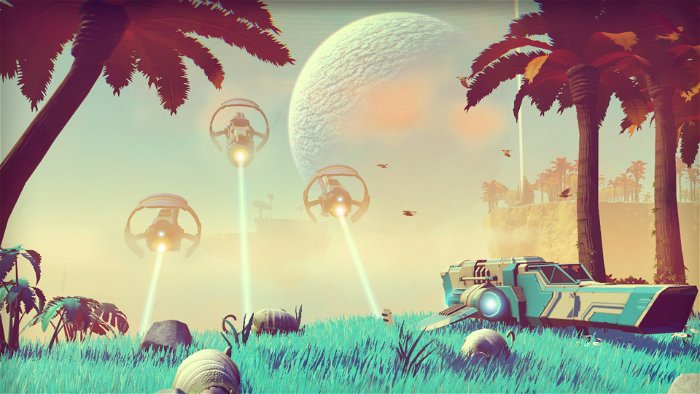There was a time when videogames weren’t quantified; a time when genres hadn’t settled into their rigid structures, and didn’t yet have a firm footing for which to traverse digital landscapes. As a kid, just about every game I came into contact with was a mystery. I had no indication of whether a game would be good or bad, or what it really had in store for me. I didn’t care about who the developers were, or what types of games they had produced and how well they had sold. All I knew was that the box looked awesome, or that one page spread in that magazine struck all the right chords and I needed to play it.

But video games are just one more victim of the great human tragedy, as even the most exotic of experiences becomes ordinary when we are regularly exposed to it. And so, as a person for whom video games became more than just a childish obsession, they also eventually became ordinary. Like millions of others, I learned to talk about video games in their constructed vocabulary; I could describe them and anticipate them with ease. I built mental boxes. As a new game was released, I would analyze it intently, sometimes without ever playing it, and I would place it into a corresponding box. “Oh that’s just another shooter,” or “Yeah, Batman: Arkham City has that same style of combat.”
Of course, this gradual normalization was aided by the advent of the internet, which ultimately revolutionized how I received information. The gaming industry grew in lockstep, making use of that powerful tool to spin interest in a game into a fervent media cycle of exclusive trailers, PR road maps, and more. Videogames began to be dissected not just by the players, but by those making them as well. Any commendable pieces were put on display, while less desirable leftovers were hastily swept under the rug in hopes that no one would notice.
Long gone are the days where Mario could duck on a very specific white block to drop into the background of a level and access a powerful warp whistle, or when Castlevania: Symphony of the Night could sneak in a reversed version of its expansive map that only the most attentive players could find. Just like video killed the radio star, the internet killed the mystery. We no longer whisper about elusive nude codes, or speculate about hidden levels, because we learned to know better, and the industry taught us.
But in many ways, No Man’s Sky seems to operate outside of that trend. By design, it’s a game that cannot be understood in its entirety—even by its developers at Hello Games. By using an impressive amount of procedural generation, the vast universe of No Man’s Sky is plainly out of reach of any person. It would take almost 500 billion years to see every planet for just a single second. But if, as Sean Murray and Hello Games attest, each planet is also home to an equally staggering array of species, plant life, and atmospheric conditions, it isn’t the nearly-infinite potential of the universe that has me so excited, it’s the ability to discover it.
Since No Man’s Sky‘s debut last year, Sean Murray has stepped in front of the camera several times to talk about the game. But what he has to say doesn’t sound like the typical videogame marketing rhetoric that we’re used to. Instead, Sean simply sounds like a guy who made something cool and wants to share it. In those moments where Sean is talking about—or lately playing—the game he and his team are building, he is obeying one of the most important rules in storytelling: show, don’t tell.
Yet, despite the generous portions of gameplay we’ve seen, there is so much mystery about No Man’s Sky. Even after considerable footage has been shown, people are still grasping for words to describe what they’ve seen in an efficient way. Is it Minecraft in space? Why is the only objective a broad directive to head towards the center of the galaxy? What awaits us when we get there? Who will be the first? These are the type of questions that, when developers like Bungie drone on and on about the importance of a player’s legacy in an attempt to sell you on their premium DLC, seem to dwarf all of those platitudes. No Man’s Sky feels as much of an occasion as it does a game; a great race to discover the mystery of its very nature.
The most rewarding experience I have had with a game in the last few years is stepping into From Software’s Bloodborne on launch. There is no better way to play it. Each game is an enigma: a labyrinth of unsettling characters, secret passageways, and punishing bosses that has, as with each of its previous iterations in Dark Souls and Demon’s Souls, inspired the formation of a community desperate to pick a part each game in a collective excavation of their hidden truths.
The way Sean Murray seems reluctant to talk about No Man’s Sky beyond the more immediate experience of playing leads me to hope that, like Bloodborne, No Man’s Sky is holding onto some great secret just waiting to be discovered. When I think about it, I feel—almost embarrassingly—like a kid again, staring at the box of some random game that managed to catch my eye.
I certainly have my doubts about No Man’s Sky, but those doubts are overshadowed by the greater sense of mystery surrounding the game. Unlike others, I am not afraid of whether or not No Man’s Sky will be innovative or revolutionary or fun. Instead, my concern is that actually finding out won’t be as rewarding as I hope. I don’t know if No Man’s Sky will be just another Minecraft-style sandbox, but I do know that, right now, the thing I’m looking forward to most is discovering the answer for myself.



